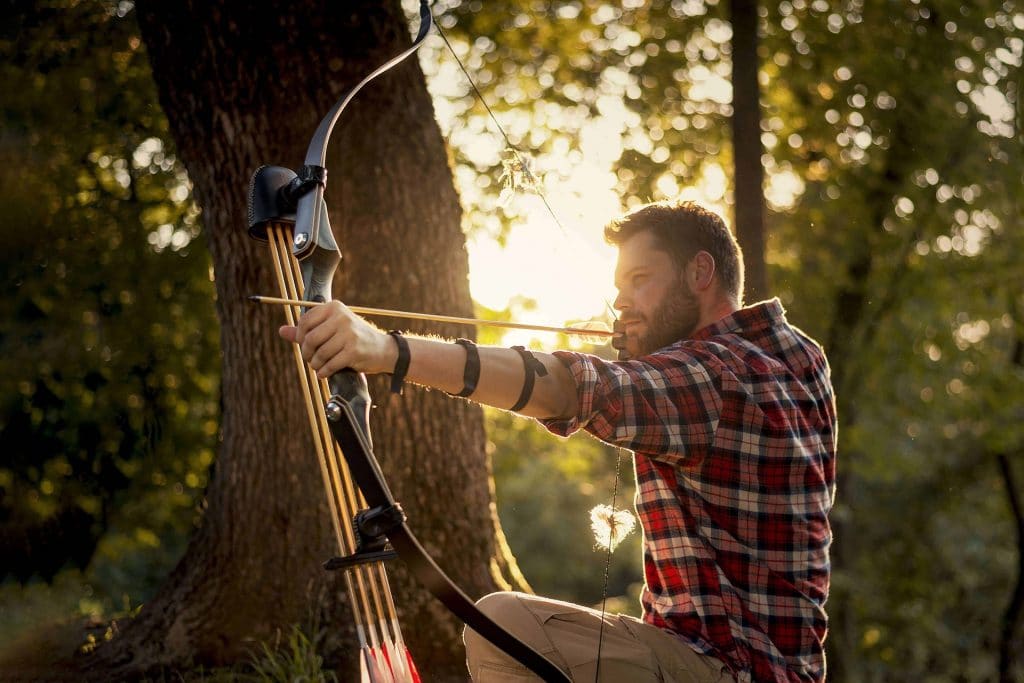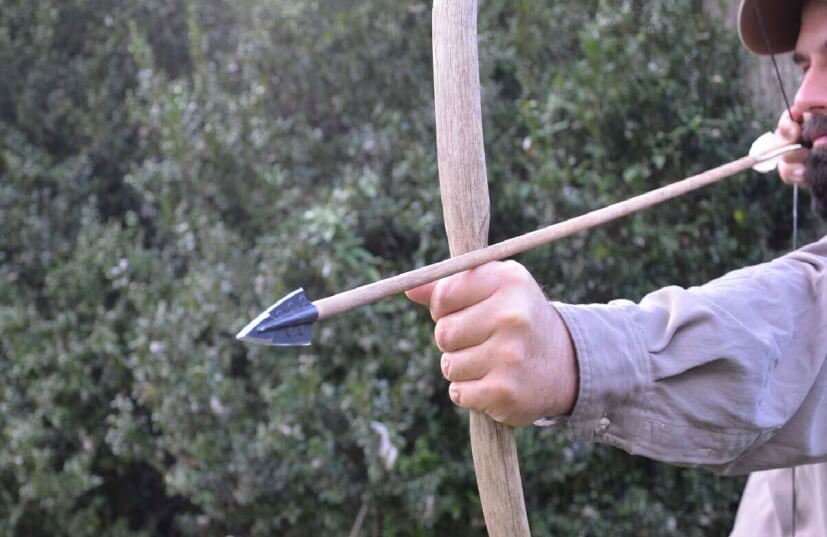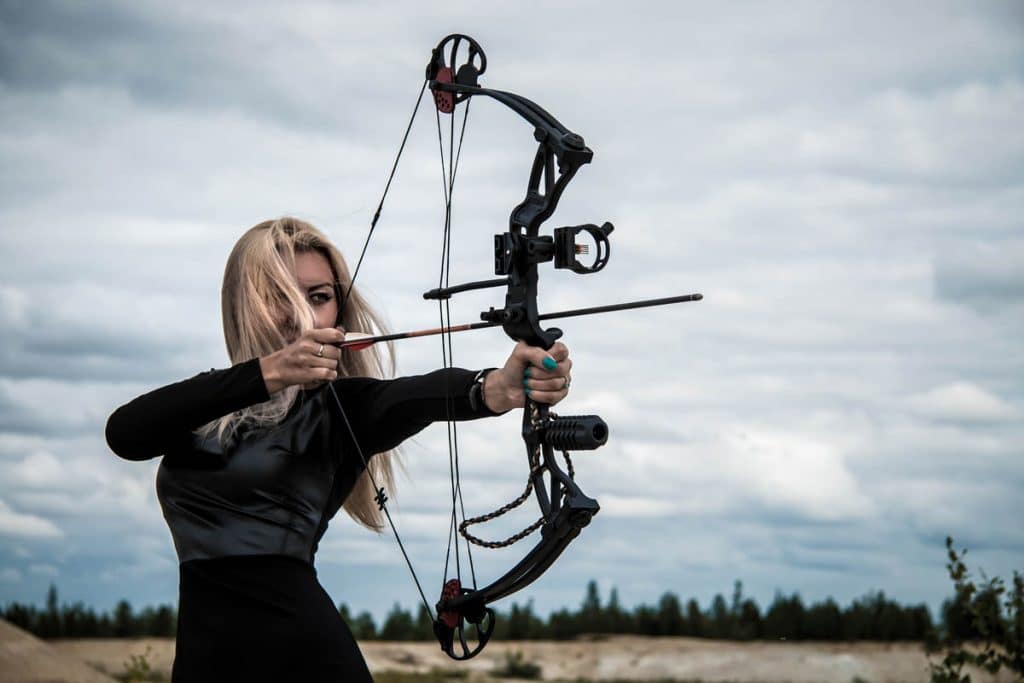

When you are preparing to shoot using a compound bow, whether it is to hunt or to practice your archery skills, you will need to string or re-string it. If you want to know how to string a compound bow the right way, you can learn a few ways from the information below.
But, for starters, you need to have the necessary equipment for the job. You will need wax, a press, and of course, the string itself. These items will make the process go smoothly so you can get back to what you love to do. However, if you choose to do the job by hand, you can skip the press.
If you need to string your compound bow, and you want to use a press, then here are instructions on how to do it:
Step 1: Get your choice of string
There are many options available that you can use for stringing your compound bow, but there are some that will actually make your manufacturer’s warranty void. So, take your time and carefully select the right string for you.
Step 2: Get rid of any with imperfections
If you choose to buy a few different options to try out, or if you just like getting a few to ensure that you get one without bumps or imperfections, that you should look at each one and see if there are any issues with it. If there are any cracks or bumps in them, don’t use them.
Even small issues could cause the string dangerous, so weed out the bad apples and only keep the perfectly smooth strings.
Step 3: Wax the string
To make the stringing process go much more smoothly, you will want to take wax and rub it along the sides of the string. This will make it a lot easier to use and attach to the bow.
Step 4: Choose a press that is safe to use on your bow
This step is important so you don’t damage your bow, and it requires some research on your part. You need to know which presses will work for your specific bow, and the best way to do this is to talk to the manufacturer. They will know which options will work the best, and which ones to stay away from. With single and double-pull presses, there are many, so ask any questions you have when you speak to them.
Step 5: Attach your bow to the press
Depending on the exact model of the press, the way that you will attach the bow may vary. Some will come with arms that lock around the bow, bolts that will hold it in its place, or a variety of other safety features. So, it is best to take your time and learn about the press before you dive in.
Also, if you know someone who has used it, or can get a professional to help or simply watch over you while you do it, this is ideal.
Step 6: Thread the string
At the end of the string will be a loop, take this loop and attach it to the center of the cam. Then, take the string and loop it under and around the cam where it will be stuck into the groove of the cam. Make sure that the string is attached to the side post near the sight window.
Step 7: Tighten and remove your bow
Once the string is set, you can tighten the bolts to keep the string in place. You will want to do one side at a time and switch off between them each turn. This will prevent one side from being overtightened while the other is still loose.
Step 8: Take the bow off the press
Once you have finished tightening the bolts, you can release the bow from the attachments of the press and remove the bow.
If you are unable to get to a press to string your compound bow and want to know how you can string or restring your compound bow at home, then here are instructions on how to do it:
Step 1: Identify if you can string your bow at home
There is only one type of compound bow that can be strung by hand, and they are the ones with a teardrop string attachment. If your bow doesn’t have this piece, then you will not be able to do this process by hand at home.
Step 2: Undo the bolts on the limbs
These bolts are tight and must be loosened in order to finish this process. So, loosen the bolts one at a time switching off between the sides. This will keep the string and bow safe from getting to be uneven and causing damage.
Step 3: Put your foot down on the string
Hold the bow in one hand and put one of your feet down onto the older string. Now pull the bow toward your body and up away from the string. You don’t want it to be pulled too much, but enough to feel some resistance and so you’re able to reach both ends of the bow.
Step 4: Attach the new string
Look for the teardrop attachment near the end of the bow, you should see two grooves on it, one on each side. Take the end loop of the new string and attach it to the side of the attachment that is open. You want to ensure that the string is attached correctly, so pull slightly onto the string and it should feel tight.
Step 5: Loosen your pull on the bow
Now that you have the new string on the bow, you can let go of the pressure you were putting on the bow by allowing your arm to relax and let your bow lower to a natural position. You can take your foot off of the string once it is completely lowered.
Step 6: Put your foot on the old string
Now that the new string is attached, once you step on the old string, it will come right off with a little pressure. You will want to pull back on the bow slightly as you step on it to make it easier. Then, you can take each end of the string off of the teardrop attachments for completed removal.
After using your compound bow for a while, you might be wondering about when you should replace the string. Well, for a compound bow string replacement, it is typically said that the best time to replace a bow is once a year. However, this depends on how often you use it, and how much you do to maintain it.
For a target bow, you can change it only once a year, even with consistent use. But with a hunting bow, you can go about two years without changing it. But, as I mentioned, this length of time can be shortened by using the bow frequently throughout the year and not taking the time to properly maintain the string.
If you see any issues with the string on your bow, no matter what length of time you have used it, you need to restring it. If you use a string that has any cracks, bumps, or other imperfections, then you risk having damage done to the bow or injury to yourself. This can be a major issue if you don’t continue with proper upkeep.
To prevent this from happening, and to keep your string lasting longer, you will want to keep up with waxing the string. Many archers or hunters will wax their bows every few weeks, but if the string starts to feel a bit dry, then you should do it more often. If you use your bow for archery competitions, then you will want to wax the string before competitions as well.
Whatever you choose to do with your compound bow is your decision, but keeping up with the string maintenance and ensuring that you restring it when needed can keep your bow lasting longer and shooting better. Whether you like to shoot around for fun, use your bow to practice and use in competitions, or you like to hunt with it, you can have a better experience with it if you learn how to string it when it needs it.
It doesn’t matter if you choose to use a press to string your bow, or you prefer to do it by hand, knowing how to do it the right way will ensure your safety and the safety of your bow. So, use these instructions to learn how to use both methods to string or re-string your compound bow and return to it whenever you need a refresher and you can get these steps down by heart and be able to string your compound bow in no time.





